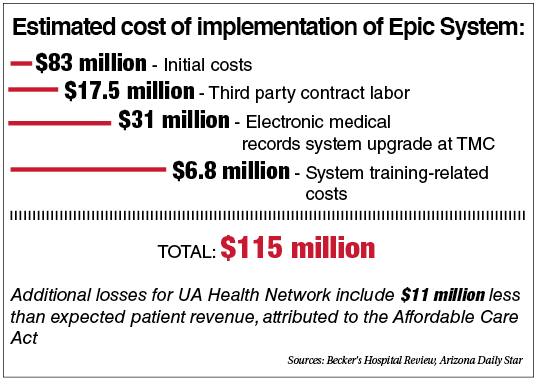The UA Health Network reported approximately $28.5 million in operating loss this fiscal year, largely due to the implementation of a new electronic medical record system.
According to reports, the total cost of the Epic electronic record system was an estimated $115 million, including $32 million in unbudgeted costs for the first eight months of the fiscal year.
Much of the expenses can be blamed on scheduling cutbacks for physicians during the training period, said Dr. Kwan Lee, director of the University of Arizona Medical Center — South Campus cardiology clinic.
Lee said the adjustment period to the Epic system was difficult and expensive since every person in the system had to be trained.
“Some degree of initial adjustment and losses were expected,” Lee said.
The Epic system also resulted in the layoffs of 23 UA Health Network staffers in the record-keeping department as it eliminated the need for their jobs.
“Whenever you go into a more efficient system, some [jobs] are going to be redundant, but it does create jobs in other arenas,” Lee said. “Whenever you have a technology shift within the system you are going to find that some services will no longer be required and some new services will be created.”
To offset implementation costs, federal agencies are providing incentive payments to encourage healthcare providers to adopt the electronic health record systems, Lee said.
Lee also said he expects the system will eventually save the network money because of its increased efficiency.
The Epic system will bring uniformity to the UA Health Network, which previously had several different electronic medical record systems that did not easily communicate with one another. The new system also allows for better coordination between hospitals by putting all patient information into a single electronic file, Lee said.
“I think in many ways it will improve the degree of teamwork, the amount of positions and the ability to center our care around the patient,” Lee said. “Hopefully it will translate into more efficient and more effective healthcare.”
The system also allows for improved communication between physicians and their patients. Patients can use the system to access their own medical records, schedule appointments and email their physicians, Lee said.









